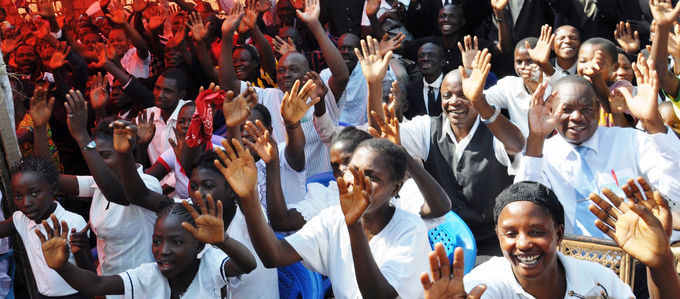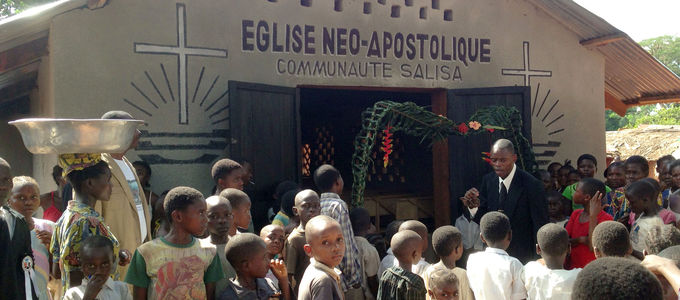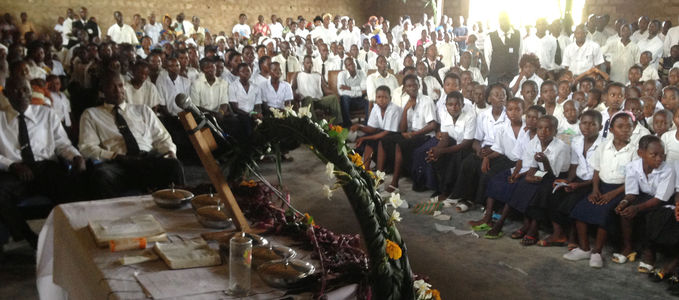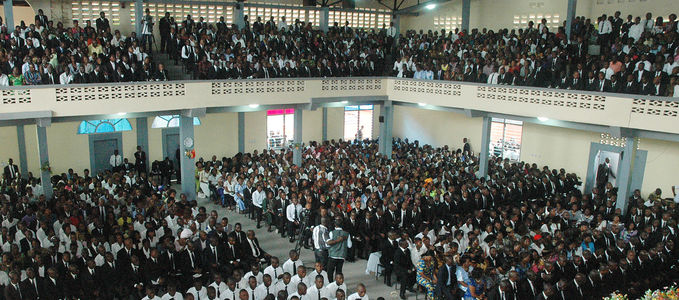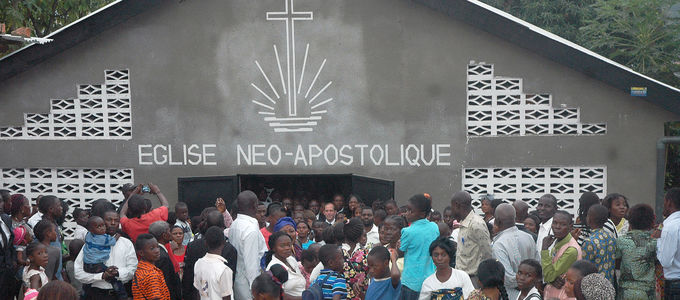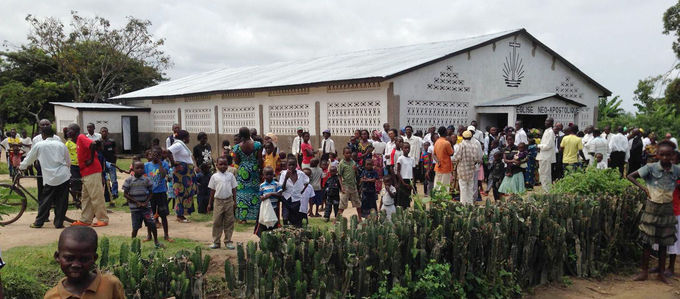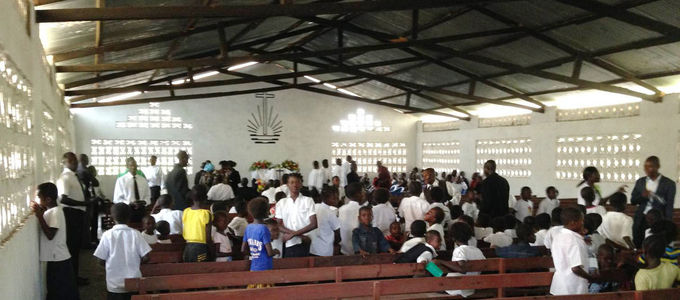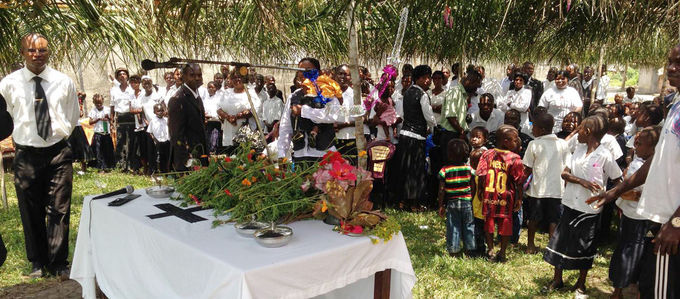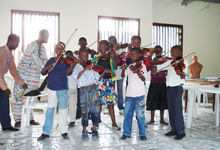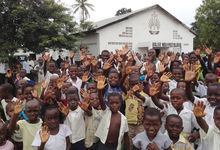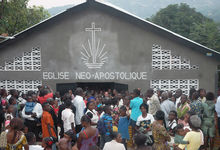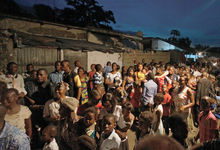Kinshasa: people build their own churches
Seventeen-hundred congregations and ten Apostle districts in one city alone. A look at a New Apostolic stronghold which the Chief Apostle will visit this coming weekend.
It would take District Apostle Michael Deppner sixteen years to visit all the congregations in Kinshasa at least once! The capital of the Democratic Republic of the Congo with its 1,700 congregations has about 130,000 active Church members, who are cared for by 8,700 ministers.
Actually, about one or two Wednesdays a month the District Apostle drops in on a congregation in Kinshasa. He drives until he sees someone in a black suit and then stops to ask him where he is going, he said in an interview with the Our Family magazine in 2013. “And then we drive to his congregation.”
Models the members can copy
That does not, however, mean that the District Apostle will necessarily be taken to an official church building. Not even every tenth congregation has its own church building. Often the congregations gather in someone’s home or in the courtyard. Often the members build their own churches. In the beginning, the churches were built using palm leaves, but in the meantime the members are building solid churches.
“Anything else is financially just not feasible,” the District Apostle says. Even though the financial resources of the District Church are limited, some assistance is available: “We have built some models that are not too expensive and that the members can copy and build.”
Location planning with aerial images
To build these churches the members make and fire the mud bricks themselves. If they buy cement, they can make real solid bricks. If the Church supplies building material it is usually in the form of iron sheets and metal doors. Wooden doors are out of the question, because the termites have a voracious appetite for wood.
Any church buildings that are constructed under the direction of the Church administration are central churches. They have a seating capacity of seven hundred to a thousand, and their location is often determined using aerial images from Google Earth. “Every church has a circle around it, denoting one kilometre. It is our goal that the members do not have more than one kilometre to walk to the next central church,” the District Apostle says.
Midweek services at the crack of dawn
Divine services are celebrated on Sundays and Wednesdays. The midweek service begins at five o’clock in the evening. Services definitely do not last more than an hour. Darkness falls quickly and electricity is spotty or non-existent.
Eighty per cent of the congregations, however, come together for divine service at six or seven o’clock in the morning. It is easier for the brothers and sisters to go to the fields or into the city afterwards. Many could never make it back from town or the fields in time for the evening service.
“The people have to scrounge for a living,” District Apostle Deppner says. “They make time to go to church.”
Three divine services in three days—this is what the Chief Apostle’s schedule says for this coming weekend. On Friday, 8 December 2017, he will begin by celebrating a divine service for ministers in Kinshasa. On Saturday, the Chief Apostle will be in Gemena, about a thousand kilometres north-west of Kinshasa, to conduct a service for the members there. The highlight and final point on his agenda is in Kinshasa: a children’s service that will be broadcast on national television.
Article info
Author:
Date:
Keywords:
Andreas Rother,
Sabine Astheimer
05.12.2017
churches,
buildings for divine services,
Democratic Republic of the Congo,
Congregational life


